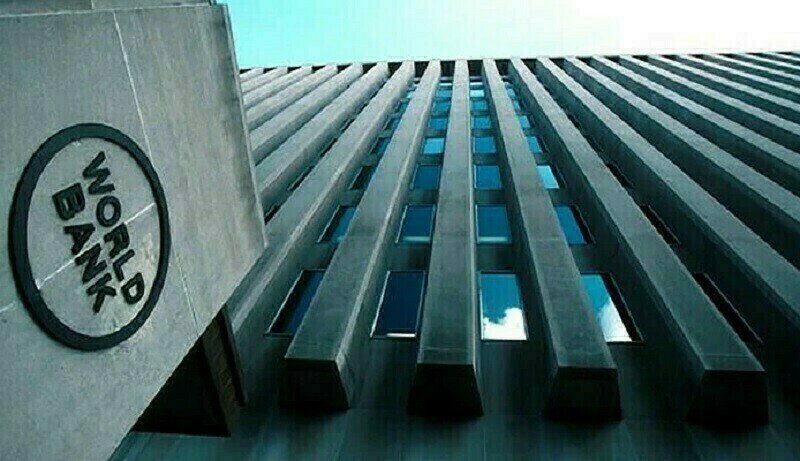ISLAMABAD: With the poverty rate rising by 0.3 per cent within one year to 40.5pc in FY24, the World Bank on Thursday warned that even the 2.8pc and 3.6pc economic growth rate it projected for current and next year was direly insufficient to dent poverty levels and improve living standards of the majority in Pakistan.
At the launch of the Pakistan Development Update (PDU), the World Bank officials also warned that despite some nascent economic recovery, vulnerability risks were very high for Pakistan in case of deep structural reforms falter and derail the recently secured International Monetary Fund (IMF) bailout. “Pakistan’s economy has stabilised, and the macroeconomic situation has improved, but current recovery is neither sustainable nor sufficient,” said Mukhtar ul Hasan, the World Bank economist and author of the PDU, at the event.
“The poverty rate is estimated to have increased to 40.5pc in FY24 from 40.2pc in FY23 ($3.65 per day 2017 PPP [purchasing power parity] per capita) due to anaemic economic growth, high inflation, reduced public investment spending (which is linked to employment), and a decrease in the real value of social protection benefits,” said the PDU, attributing higher poverty to slow growth, low market and business confidence, flood-related supply chain disruptions and high inflation rates.
World Bank Country Director Najy Benhassine said that the steady implementation of a structural reform plan to address longstanding constraints to faster growth will be vital to sustaining and strengthening the positive momentum.
Sees high vulnerability risks lingering, despite some nascent economic recovery
“These include reforming an inequitable and distortive tax system, reducing inefficient expenditures and untargeted subsidies, lessening the large state presence in the economy, reducing barriers to trade and investment, and reducing losses in the energy sector”, he said, adding that “implementation of planned structural policy reforms supported by a strong national political consensus and increased private sector participation is critical to mitigate risks, support stronger private-led growth and poverty reduction.”
Mr Mukhtar said the sharp fiscal contraction, primarily through development cuts, subsidy reforms, import controls and capital controls under the IMF’s standby arrangement, supported much-needed adjustment to counter another crisis in FY23 as it also unlocked external flows, but this negatively impacted growth and investment in the country.
He said the recovery was expected to continue, with real GDP growth expected to reach 2.8pc in FY25 and 3.2pc in FY26. Still, output growth would remain below potential over the medium-term as tight macroeconomic policy, elevated inflation, and policy uncertainty continue to weigh on economic activity. “Faster growth will be needed to support significant improvements in living standards,” he said.
The scenario is based on three baseline assumptions that both Mr Mukhtar and country lead economist Tobias Haque said could significantly affect growth forecasts if any assumptions go wrong for any reason. These include effective implementation of IMF’s new programme, continued rollovers and refinancing from bilateral partners and no major climate shock.
Double-digit inflation projection
The bank projected inflation at 11.1pc in FY25 and 9pc in FY26 and estimated the current account deficit widening from 0.2pc in FY24 to 0.6pc in FY25 and further to 0.7pc in FY26 owing to recovering growth. Foreign exchange reserves are forecast to grow with IMF inflows and new external financing, said the bank, but estimated the fiscal deficit to be stubborn at 7.6pc in FY25 and then slow down a bit to 7.3pc in FY26. On the other hand, debt is projected to increase in the medium term to 73.8pc of GDP in FY25 and to 74.7pc in FY26.
The bank also warned that a return to business as usual was not enough with rapid population growth, the current outlook would not improve living standards for most Pakistanis because the country’s growth potential has declined for decades.
Waqas Idrees, another WB economist, said power sector distribution companies (Discos) would need to perform better than technical and distribution loss targets to address ever-rising circular debt, but they could not even meet those targets. He said Nepra had set an 11.7pc target for losses that are monetised in tariff, but they were actually incurring 16.45pc losses on average, and their billing recoveries struggled around 90pc. Combining two factors alone translated into more than Rs1 trillion a year as a 1pc loss worked out at about Rs40bn.
The bank called for private sector participation in Discos to improve service delivery through fresh investments as the government could mobilise resources from the local, regional or international private sector and development partners through private sector participation. Discos could not raise their own financing because their liabilities were more than their assets.
Published in Dawn, October 11th, 2024





Leave a Reply